
The first time it touched my lips, I knew I would be back for more. While walking the Vía de la Plata section of the Camino de Santiago last March, I wandered into the Sol y Luna Cafe in the town of Cea. Mary, the owner of the establishment, offered me a hearty bowl of lentil soup accompanied by a generous serving of bread. This was no ordinary bread, Mary explained. This was the famous bread of Cea, known throughout the area since the Middle Ages and certified by a Protected Geographical Indication. After I had hungrily devoured the slices she placed before me, I asked if I might possibly have some more for the road. I departed with a large loaf weighing about two pounds; it provided sandwiches for ten pilgrims on the following day. I have dreamed of the bread of Cea ever since, to an extent that borders on obsession. When I heard about their annual festival in celebration of bread, I vowed to return.
Now in its twenty-sixth year, La Festa do Pan de Cea takes place on the first Saturday in July. In recent years, La Ruta dos fornos (the route of the ovens) opens the festival on Friday evening. Accordingly, I made plans to spend two evenings in Cea at the Casa Mañoso, a charming guest house operated by Roberto and Antía. The route of the ovens was a traveling party: 5 historic bakeries served participants a drink and a pincho while we walked from one to the next. Groups of musicians, complete with bagpipes, followed the celebrants through the streets as we feasted on local fare and danced. Galicia is, after all, a decidedly Celtic region of Spain. It was as fascinating to watch the food being prepared in the ancient bakeries as it was to taste the flavors: cheeses, meats, rice dishes, tortilla and wine, all locally sourced and served with copious amounts of Cea’s bread, the crown jewel of the event.
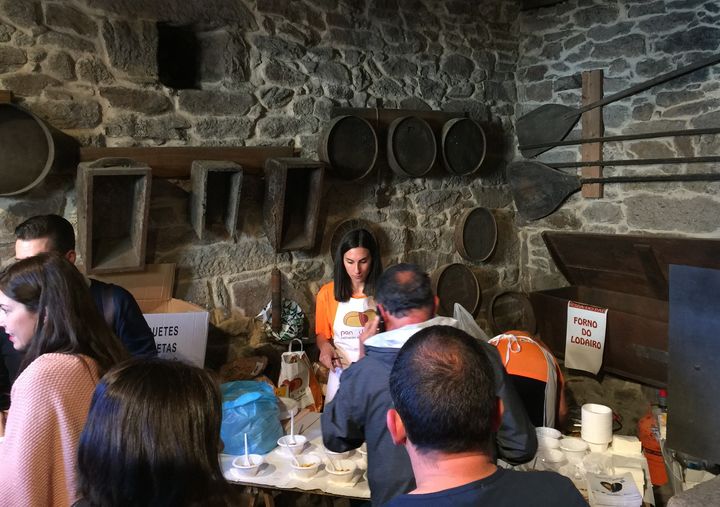
The Route of Ovens

Inside the historic bakeries
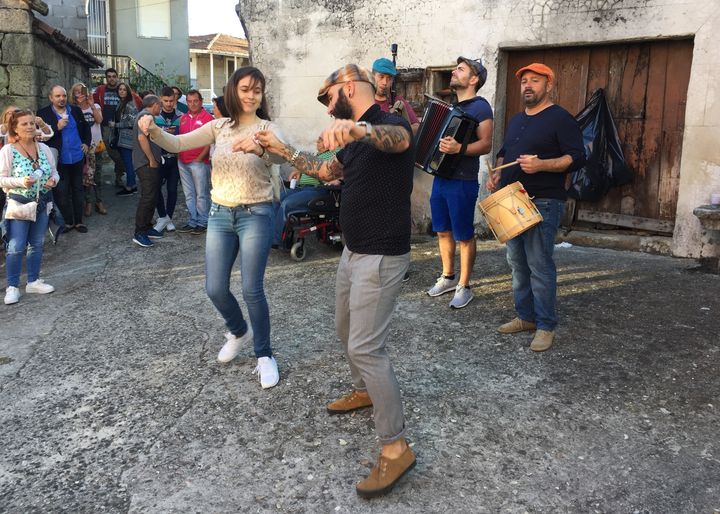
Dancing in the streets of Cea
The official Breadfest began the following morning right after mass at the Iglesia Virxe Da Saleta, and the festivities took place on the adjacent grounds. A massive bread stand was in the center, offering samples dipped in local olive oil. Food and music were again highlighted; besides bread, one could taste olives, empanadas, chorizo, grilled meats and octopus, all accompanied by regional beer and wines. Between nibbles, people danced, socialized, and visited the displays on local grains, potatoes, olive oil and crafts. Everyone eventually sat down for a substantial afternoon meal under the shade of awnings; I was invited to sit with my hosts at the Casa Mañoso. In typical Spanish fashion, much lively discussion ensued over a hearty meal of pulpo (octopus) swimming in olive oil that just begged to be soaked up by the bread. After the meal, I watched a sculptor complete his wooden statue of a traditional female baker using a chainsaw.
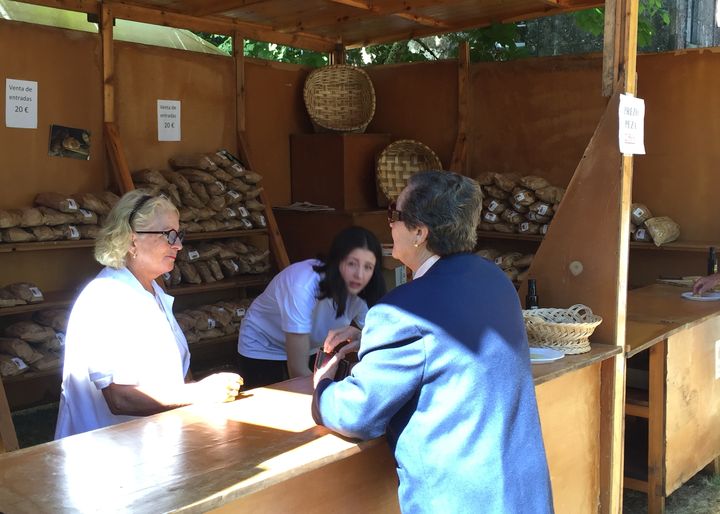
The famous bread of Cea
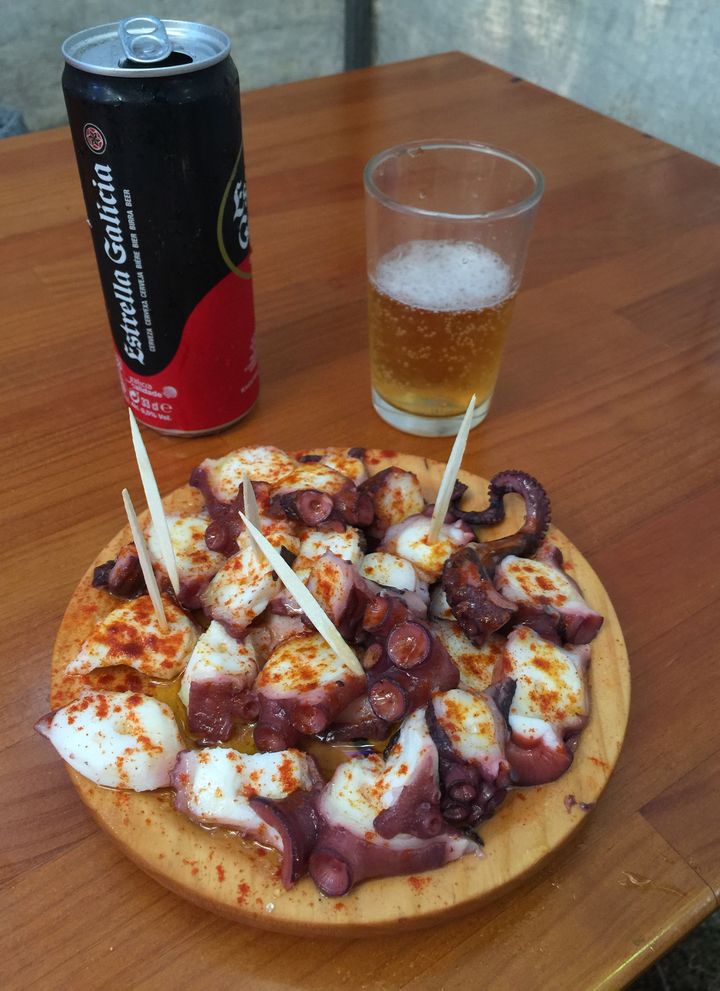
Pulpo gallego (octopus)
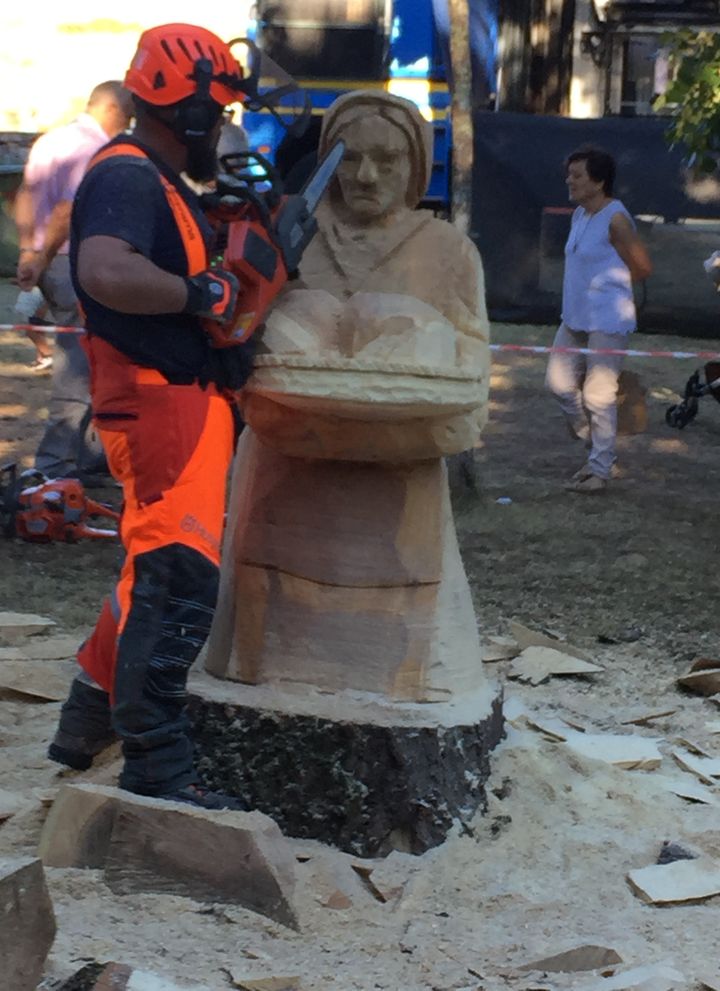
Chainsaw sculpture
And the bread! The loaves are large and oval-shaped, and the outside crust is hard. The crumb is denser than other breads in Galicia, but there are pockets of air that allow for ample absorption of olive oil. The bread and oil combined make a perfect breakfast, snack or accompaniment to any meal. In fact, when I first arrived in Cea on this second visit, I went straight to the first cafe I saw and ordered a sandwich. It felt just like coming home, and it was everything I had dreamed of for over a year.
Overall, what shines through is an intense pride: the inhabitants of Cea come together to celebrate not only their bread but also their rich gastronomic culture, their music and dance, their arts and their language, gallego, or Galician. Although people generally spoke with me in Spanish, I overheard many conversations in Galician. Clearly, the language and the culture are inseparable.
I would love to revive the village festival here in the United States before too many of our culinary traditions are lost. Jose Dalama of the Concello de Cea (City Hall) convinced me that it is possible to pull off such events with great success by offering the example of his own town. It gave me tremendous joy to witness an entire population come together to celebrate their heritage and their famous local product. Young and old, from all walks of life, spent the better part of a weekend honoring their bread and those who produce it. All seemed to agree, as it was stated in the closing ceremony, that the bread of Cea is the best bread in the world. And I may have to concur: “es el mejor pan del mundo!”
